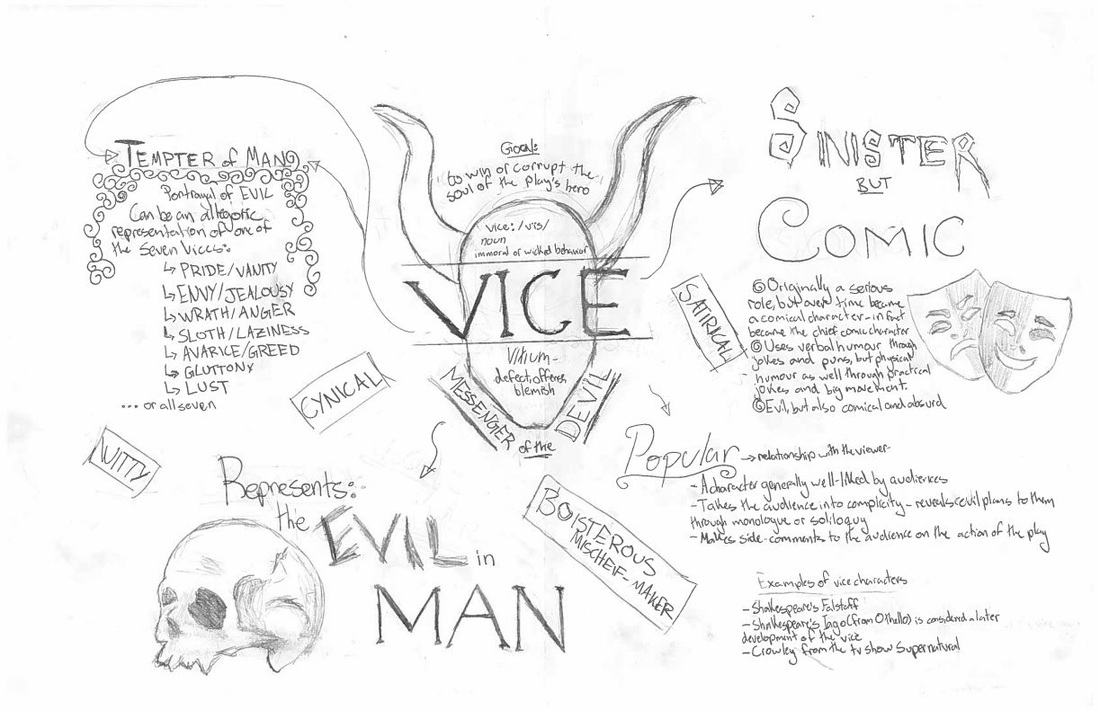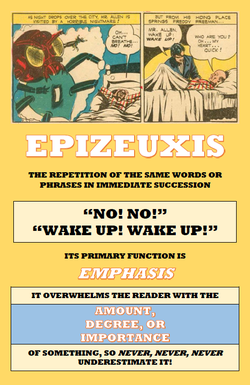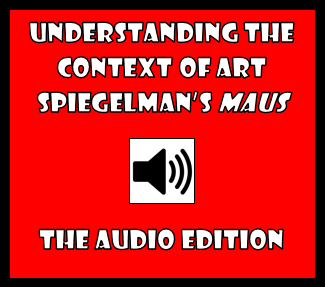Stock Characters, Take 2 -- The Vice
4/9/2014
by Glen Downey, Comics in Education, www.comicsineducation.com If you managed to miss my recent post of a student's visual research and note-taking of the "Il Dottore" character from Commedia dell'Arte, you should definitely check it out. In that post, my student, Hannah, does an unbelievable job of visually rendering the character in a way that makes sense to her, and consequently, to us. Here, Marina has done a similar visual piece dealing with the Vice, that prankster from medieval morality plays that was such a thorn in everyone's side. The great thing in having students learn about these characters is that it opens their eyes to a whole tradition of drama that they wouldn't have previously known about. We sometimes like to think that everything will be fine if we manage to cover a Shakespeare play each year, but why not give students an opportunity to explore the traditions that Shakespeare would have drawn upon? The Vice was originally a fairly serious character on the medieval stage but really grabbed a foothold when playwrights realized the extent to which he could be played for comic effect, terrorizing both good and evil characters by grabbing them, poking them, or otherwise harrassing them. As I've mentioned previously, our examination of stock characters is specifically in connection with a unit on Dario Fo's Accidental Death of an Anarchist. However, don't for a second think that it's not a useful activity with which to preface Shakespeare. Understanding the Vice can help us better understand the Falstaff of 1 Henry IV or the diabolical Iago. You might not think to connect these characters immediately but they both owe to the tradition of the Vice. I love how Marina's work is filled with descriptive adjectives that get at the contradictions inherent in the Vice, because it is these contradictions that Shakespeare ended up developing in order to create fully realized, three-dimensional characters in the likes of Falstaff and Iago. Just take a look at Kenneth Branagh--whom your students know only as either Gilderoy Lockhart or the director of Thor--in this brilliant clip as he does that ever-so-Vice-like thing of letting the audience in on what he's about to do. I plan on showing a few more of these to you, and I really hope you'll take me up on my offer to show me similar work that your students are doing. We would love to feature it here at Comics in Education!
0 Comments
Your comment will be posted after it is approved.
Leave a Reply. |
Glen DowneyDr. Glen Downey is an award-winning children's author, educator, and academic from Oakville, Ontario. He works as a children's writer for Rubicon Publishing, a reviewer for PW Comics World, an editor for the Sequart Organization, and serves as the Chair of English and Drama at The York School in Toronto. If you've found this site useful and would like to donate to Comics in Education, we'd really appreciate the support!
Archives
February 2019
|




 RSS Feed
RSS Feed
